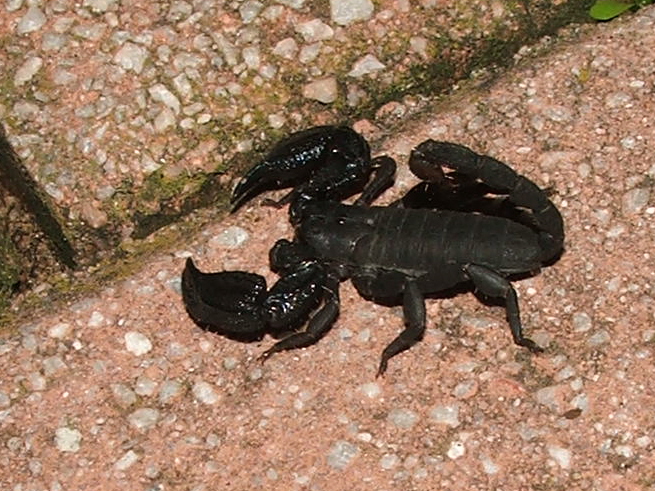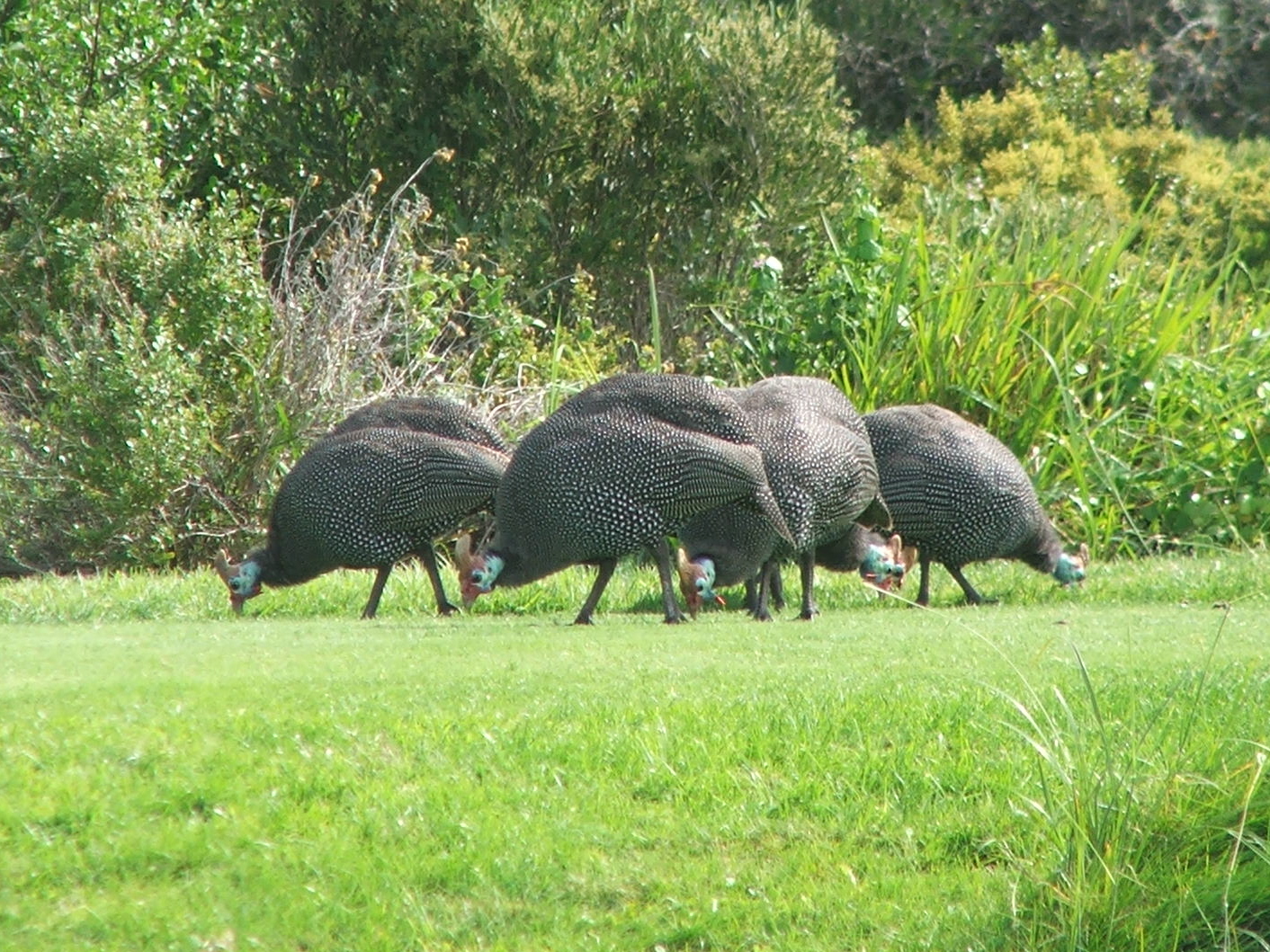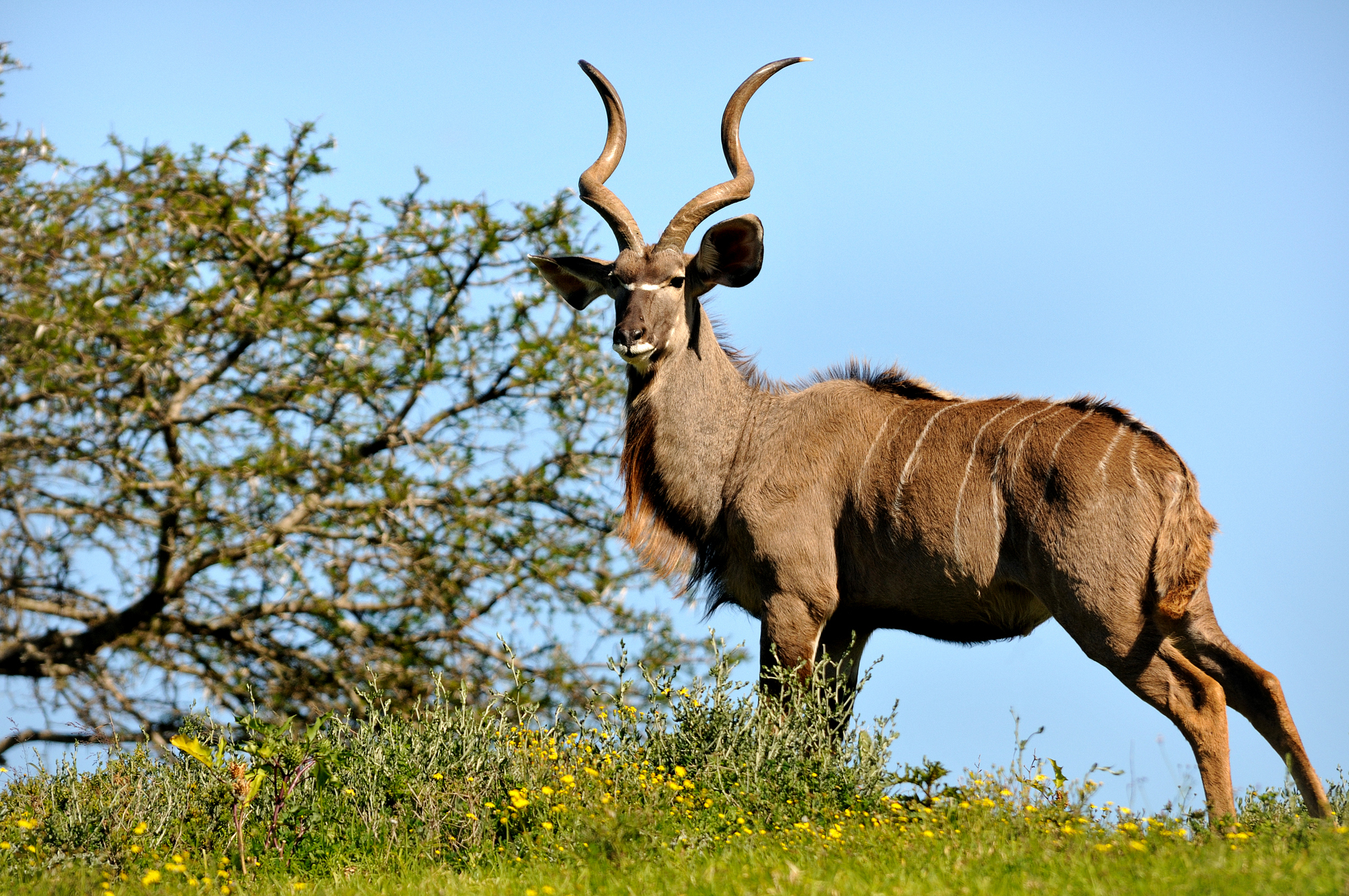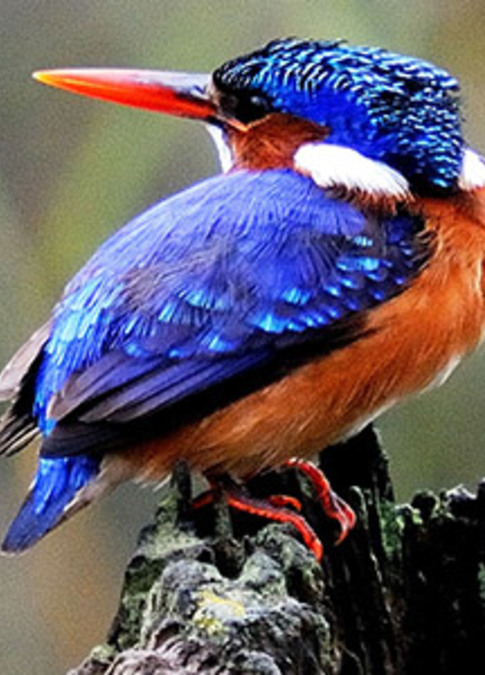Scorpions and koedoedrolspoeg
The flash of light temporarily blinded the killer showing him poised with weapon raised, ready to strike. As darkness flooded back, so his jet black menacing form disappeared, and had it not been for the captured digital image we might never have known of his presence.
Very often during these warm autumn days we have lunch out of doors, and inevitably the odd bread crumb or sliver of cheese falls from the table. This then attracts small creatures: the Cape robins are frequent visitors. After dark there are others that come to see what the robins may have overlooked. Among these are the big, brown, American cockroaches that are such a pest in coastal areas during the summer and autumn months.
 And these in turn attract the predators, in this case a shiny, black, Cape scorpion whose image we captured. Scorpions are entirely carnivorous and catch their prey with their claws before delivering the coup de grace with the sting on the tail which is brought down over the head. They then masticate the softer parts of the insect with the small chelicerae between the pedipalps, absorbing their food in semi-liquid form.
And these in turn attract the predators, in this case a shiny, black, Cape scorpion whose image we captured. Scorpions are entirely carnivorous and catch their prey with their claws before delivering the coup de grace with the sting on the tail which is brought down over the head. They then masticate the softer parts of the insect with the small chelicerae between the pedipalps, absorbing their food in semi-liquid form.
So often recently we have been bombarded with bad news, especially regarding our larger and more charismatic creatures such as rhinos, elephants and lions. The savage attack on the rhinos at Kariega Game Reserve came to mind. At times it seems that humans are hell bent on driving these creatures to extinction, but there are also good news stories, such as that of the amazing recovery of the rhino Thandi despite her ghastly wounds. And there are those unreported stories of where we unwittingly do all we can to improve the lot of other creatures: in our own case the crumbs and cheese fragments from our table.
Then there are the three light standards at the parking lot of the village supermarket. At dawn every day they are visited by three fork-tailed drongos, one bird to each light. There the drongos make short work of all those moths that might still be perched on or around the lights. No doubt during the night the local bats are also attracted to this source of food provided by a building owner whom I am quite sure is entirely unaware of the service he provides.
 Our local guinea-fowl have benefitted thanks to a nearby golf estate, the population at least doubling in the last few years. Not only are the greens and fairways much to their liking, but the bunkers are custom made for sand baths. Best of all however, is the regular re-seeding of various parts of the course. Here they find food laid on in large quantities. They are quite obviously thriving despite the attentions of a family of lynx who also appear to be living off the fat of the land. (What this may do to the price of a round of golf I don’t know.)
Our local guinea-fowl have benefitted thanks to a nearby golf estate, the population at least doubling in the last few years. Not only are the greens and fairways much to their liking, but the bunkers are custom made for sand baths. Best of all however, is the regular re-seeding of various parts of the course. Here they find food laid on in large quantities. They are quite obviously thriving despite the attentions of a family of lynx who also appear to be living off the fat of the land. (What this may do to the price of a round of golf I don’t know.)
Our granddaughter, Sarah, then told us of the baboons she had seen on television, that have learnt that lorries carrying sugar-cane often lose a part of their load while negotiating a sharp bend in the road. The baboons wait at this particular corner and have also become traffic-savvy and seldom misjudge the distance between vehicles while making use of the largesse provided by the cane farmers. The baboon population is apparently growing by . . . well, by leaps and bounds.
While sitting in the sun after lunch, eating grapes and spitting pips, the conversation turned to that old, South African competitive sport of koedoedrolspoeg – for the uninitiated, the spitting of kudu droppings.
“Did you ever spit koedoedrol, Grandpa?” Sarah asked.
“No,” I answered, “because when I was a boy, other than in and around the valley of the Great Fish River, there were no kudu in the Eastern Cape. It is only since the 1940s that kudu have spread far and wide to places where previously they were unknown, such as Kariega.”
“So what have people done to cause this to happen?” she asked, but that I couldn’t answer. There are as many theories as there are experts, but no one can tell precisely the cause. For once, it would seem, humankind is not responsible for the change.









